Winner Announcement
June 10, 2025
Judging Date
May 18, 2026
Registration Opens
August 1, 2025

Embarking on a journey through the lush vineyards of Sonoma County, we delve into the world of Sonoma-Cutrer, a name synonymous with the artful orchestration of winemaking. At the helm of its brand management is Tracy Thornsberry, a seasoned expert with an impressive 19 years at Brown-Forman as the Senior Brand Manager for Sonoma-Cutrer, Tracy navigates the delicate balance between tradition and innovation, steering the brand toward new horizons. Join us in exploring her insights, experiences, and the captivating story behind the uncorked excellence of Sonoma-Cutrer.
Everything in our portfolio development starts with the portfolio strategy that we created when I first joined the team in 2012. We have 5 distinct territories that we have identified for Sonoma-Cutrer that align with the brand’s equity. Whenever we have an idea for a new product or a request from a market, we look at how that proposition may or may not work within that framework. Having that level of rigorous discipline ensures that we aren’t creating something that doesn’t align with our winemaking philosophy or our brand equity and that it will make sense for our target consumers.
Yes, that has been a really fun project to work on for the brand. But, it wasn’t a decision that we took lightly. Our cross-functional project team had a lot of robust debate about this move before we decided to jump into the category with a super-premium canned Chardonnay.
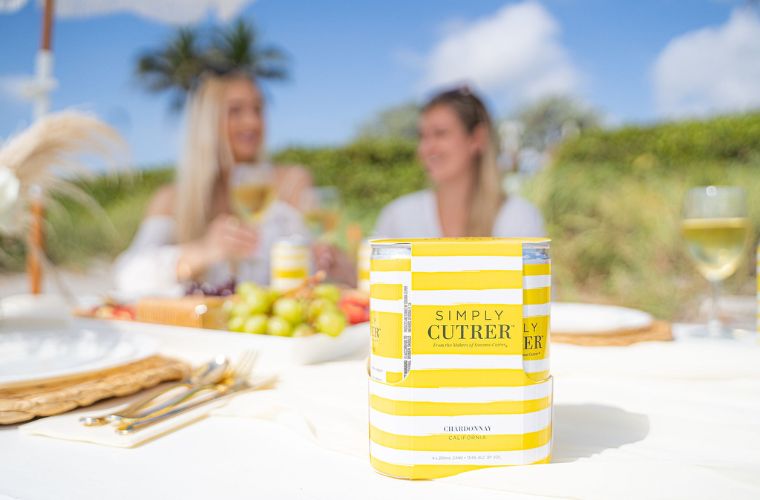
To your question, there are many benefits of the can format including reducing the shipping carbon footprint, increasing consumer recycling, etc. First and foremost, we try to meet the consumer where they are and fulfill their needs. This format aligned with our brand’s strategy for reaching new consumers and expanding market presence while extending consumption occasions.
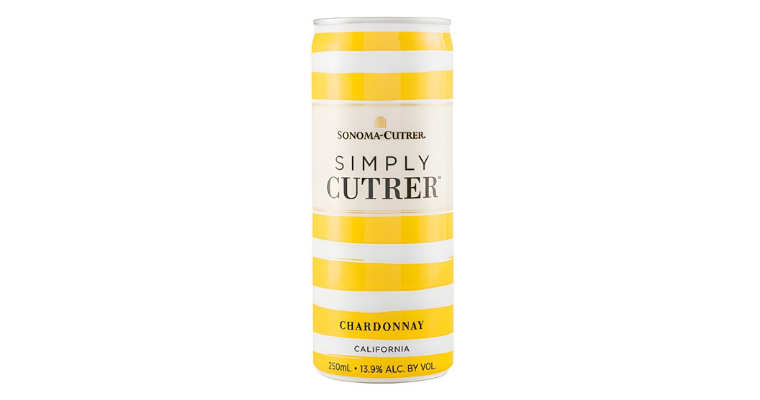
As we evaluated the category, we identified white space in super-premium can Chardonnay while realizing that consumers were looking to enjoy wine anytime, anywhere. Bottles certainly don’t translate to all occasions especially outdoor activities like hiking, enjoying the pool or beach, skiing, etc. The can format makes wine a viable option for an active lifestyle which translates to a lot of younger consumers, especially millennials. Simply Cutrer was another way for us to introduce our wine to a new set of consumers while giving them the option to enjoy really good Chardonnay in a can.
Our Bonjour Sonoma campaign which started in 2021, was the result of a deep dive into the brand’s positioning that helped us refresh how we talk about the brand and capture consumer’s attention in a very cluttered category.
Our process started with an architectural dig into the brand’s history - where we had been, how we had gotten there, and where we wanted to go. From there we evolved the work by identifying our brand’s archetype, revising our equity triangle, positioning statements, articulating our category entry points, etc. This strong foundation work was what led to the updated creative idea that is a cross-section of our California roots with a nod to Burgundian traditions. Since we want to invite consumers into our brand franchise, it was critically important to us that the brand idea be brought to life in a modern way that was different from everything else you see in the wine category.
It wasn’t always easy or comfortable having these conversations, but I am incredibly proud of where the brand has landed on this work and how the team worked together to produce such stunning creative that is fun and engaging.
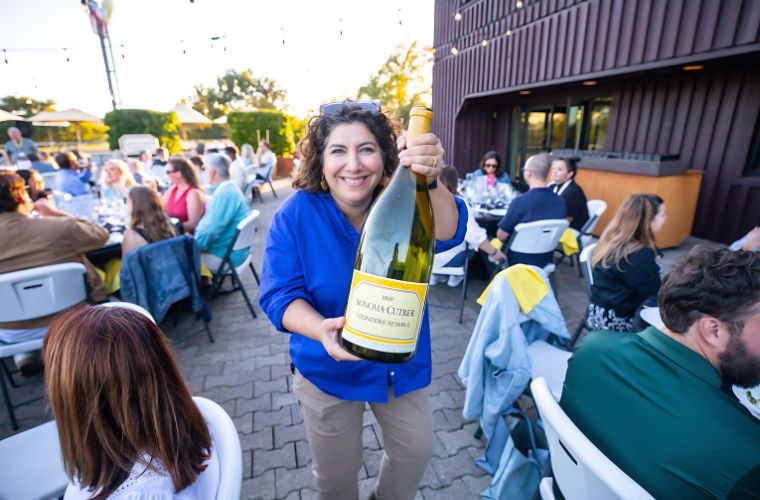
Image: Sam Parsa, Associate Winemaker, pouring a 1991 vintage of Founders Reserve at a distributor dinner on the Sonoma-Cutrer terrace.
As our industry has struggled with this cohort being slow to adopt wine, I think we have all realized that there is not a one-size, simple solution for attracting millennials.
Rather than deviating from our brand’s values and core equity, we have instead taken the approach of incorporating tactics that appeal to millennials but work within our overarching strategies. That might mean rather than investing in traditional media, we focus our efforts on social, streaming, and other media formats that are more likely to reach the younger consumer. Or, highlighting our beautiful croquet courts at the winery that allow guests to curate their experience when they visit us in Sonoma County. Or, focusing our in-store promotional efforts against e-Premise vs printed sale circulars, etc.
This topic is one that we give a lot of attention to and I am sure it will continue to evolve with the brand over time.
As a leader in this initiative, Sonoma-Cutrer prioritizes protecting the environment in all of our winemaking processes. We were excited to see Sonoma County prioritizing these efforts for our region and we immediately supported their work.
Our vineyard and winery are both certified sustainable. Beyond our Sonoma County Sustainable certification, we qualify for many others including Fish Friendly Farming and California Certified Sustainable Winemaking.
While our efforts in this area started years ahead of consumers seeking sustainable products, what we have seen over time is that consumers put a premium on sustainable wines and seek them out in-store. Each of our wine labels carries the Sonoma County sustainability logo which allows us to share our story with consumers to highlight our environmental stewardship.
Sonoma-Cutrer’s sustainability doesn’t end with our vineyards and winery. We believe we have a social responsibility to give back to our employees, our neighbors, and our community.
We are so committed to integrating sustainability into our culture and decision-making that, since 2016, we have had a Sustainability and Environmental Team dedicated to reducing our environmental impact now and for generations to come. SET boosts awareness of our efforts by training and engaging with our employees.
Our work in this area is never done. There are always new ways for us to think about reducing, reusing, and recycling across all functions of our business.
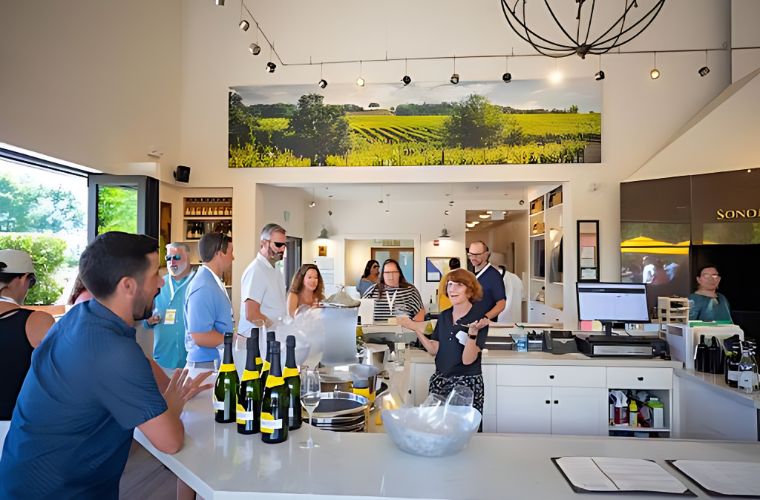
Image: Sonoma Cutrer Tasting Room
Certainly, many of our efforts carry the added benefit of positively impacting our business and our consumers. It is impossible to name them all here, but to highlight a couple of them for you:
Water conservation - this, of course, is such a critical topic in our industry. At Sonoma-Cutrer, we reduce and reuse water. 100% of our process water is treated to be used to irrigate our vineyards and landscaping. We also use automated drip irrigation, and frost fans and closely monitor our vines to conserve as much water as possible.
Energy Efficiency - When the winery was built in 1980, our original barrel room was dug into the side of a hill to create cave-like conditions that help us control our temperature naturally. In 2013, solar panels were installed in the winery that generates 150,000 KWH of power per year. We also conserve energy by using Energy Star-rated office equipment, leveraging natural air to cool down or warm up rooms, replacing incandescent light bulbs with fluorescent ones, and using timers and motion-activated lights.
Environmental Impact - As part of our overall Zero Waste to Landfill goal, the winery sends 99% of materials from production to be reused or recycled, eliminating about 50 tons a year from the waste stream. Our DTC business also uses bi-coastal fulfillment houses that reduce our transportation carbon footprint while ensuring our consumers get faster service on their wine shipments.
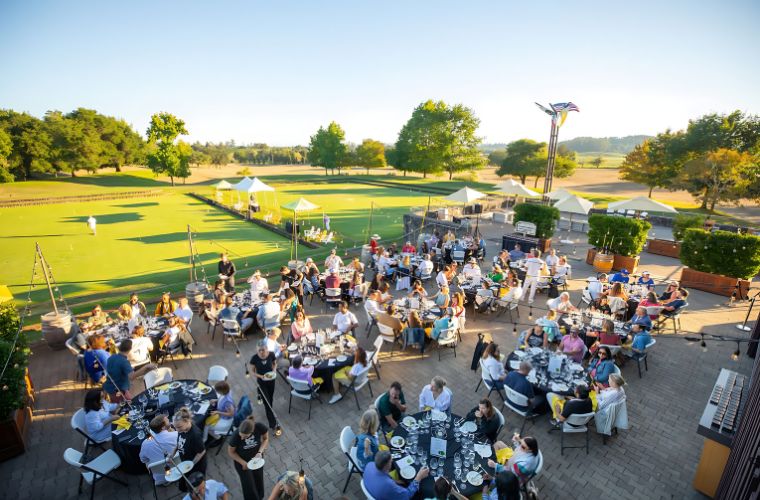
Image: Overhead view of the Sonoma-Cutrer terrace with two professional croquet courts in the background.
As we think about growing our business in this segment, we start with core consumer insights. For example, we know super-premium consumers want to buy wines that are worth the price paid. Pair that with our 40+ years of experience in winemaking and the quality and consistency of our wines, we know we have a competitive advantage when it comes to retaining consumers. We have used this knowledge to create a robust PR strategy that includes submitting our wines for ratings and awards from well-regarded industry experts.
We then take that information and apply it to the shopper. We know the majority of shoppers entering a store may know what category of wine they want to drink but not the brand. Highlighting how well our wines are regarded with a high rating or award gives new consumers assurance that our wines are good while reminding our loyal consumers of our expertise in Chardonnay and Pinot Noir.
That is just a singular example of the tactics that we employ in the execution framework of our 360° marketing and sales strategy. But certainly, everything we implement on Sonoma-Cutrer is focused on growing our business by inviting new consumers into our brand franchise and retaining our current loyal consumers.
As you know our Chardonnay winery was considered to be cutting edge and state of the art when it was built in the 80's and still is today. In some ways, our Pinot Barn is the exact opposite of the Chardonnay winery. The barn itself is small and quaint, and most of the work done by the winemaking team is hands-on and more labor-intensive. For example, they hand-punch down the wine when it is fermenting in our stainless steel vats- certainly not an easy task. But, we believe that this works really well for our Pinot Noir program. Pinot Noir is such a fragile grape that it requires gentle handling and a great deal of attention for its ever-changing needs.
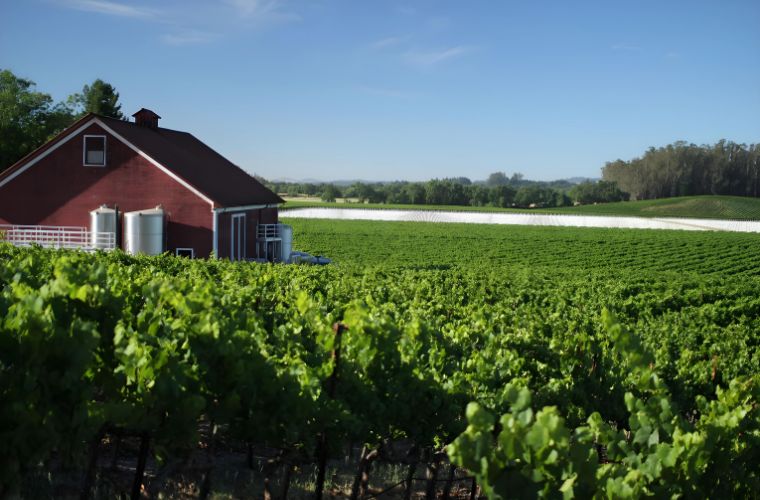
Image: Pinot Barn in The Cutrer Vineyard at Sonoma-Cutrer.
It is easy to turn guests who have had the opportunity to visit our barn, see our team in action, and enjoy the wonderful Pinots that they create into loyal Sonoma-Cutrer brand fans.
We believe in adopting a curiosity mindset so innovation is a constant across all functions of our business. That means that every year our production team will undertake several innovation projects during harvest. From the marketing and sales side, we continuously look for new product offerings, how to make selling and buying our wines easier, and identify competitive advantages. Regardless of where the work begins, it always starts with an insight. We then look to identify information that we can then test for viability. Many of our tests become business practices that we adopt.
Some of the more recent product innovations we have tested and adopted include converting all our wines from cork to screwcap, introducing Simply Cutrer can wine, offering keg wine to our on-premise customers, and our very unique Buy-the-Barrel program.
[[relatedPurchasesItems-61]]
Tracy Thornsberry's journey as the Senior Brand Manager at Sonoma-Cutrer showcases a perfect blend of innovation, tradition, and sustainability. From navigating the complexities of global product development to spearheading creative campaigns, her insights offer a glimpse into the meticulous process behind Sonoma-Cutrer's excellence. As the brand continues to evolve, Tracy's stewardship ensures that each bottle uncorks not just a premium wine but a narrative woven with passion, balance, and a commitment to the environment.
Enter your Wines now and get in front of top Sommeliers, Wine Directors, and On-Premise Wine Buyers of USA.
